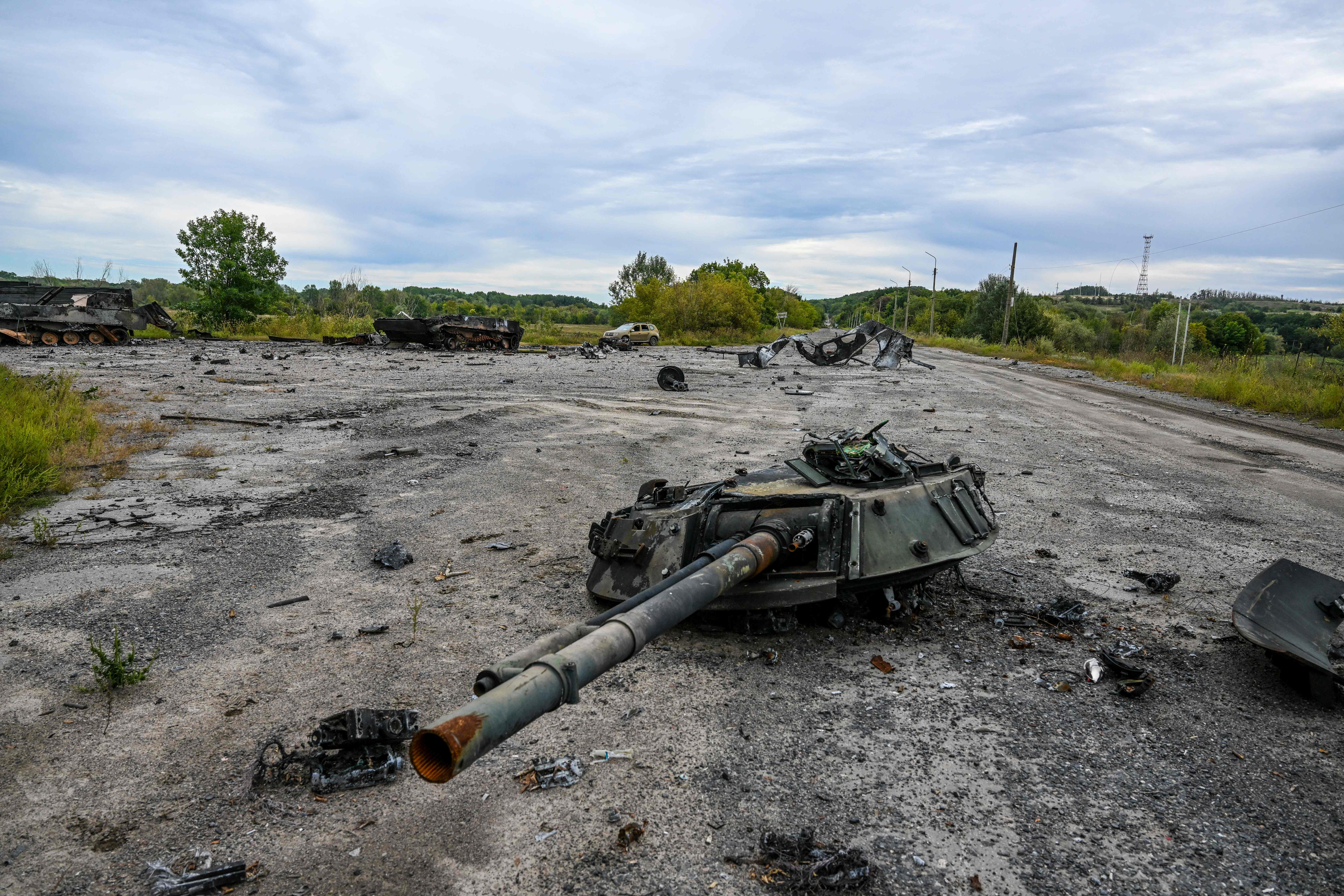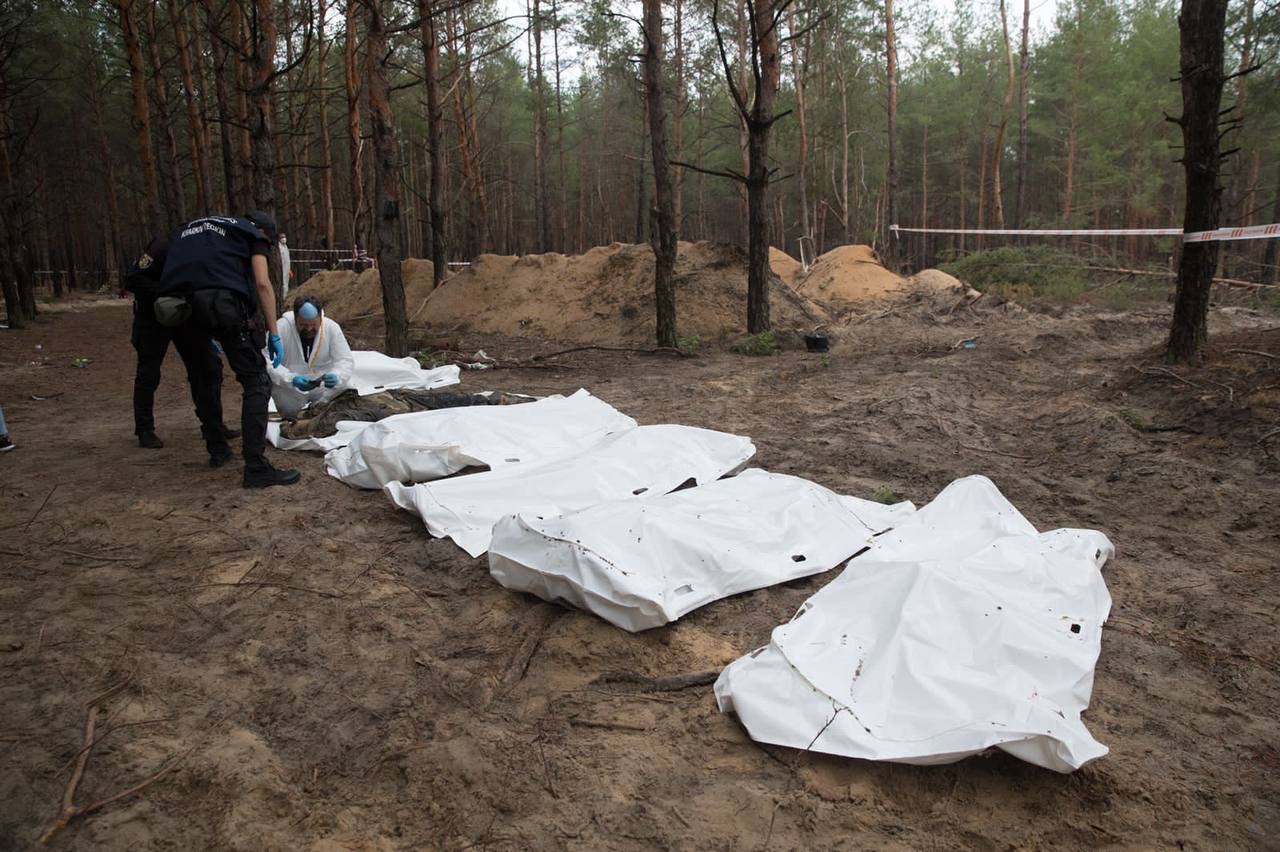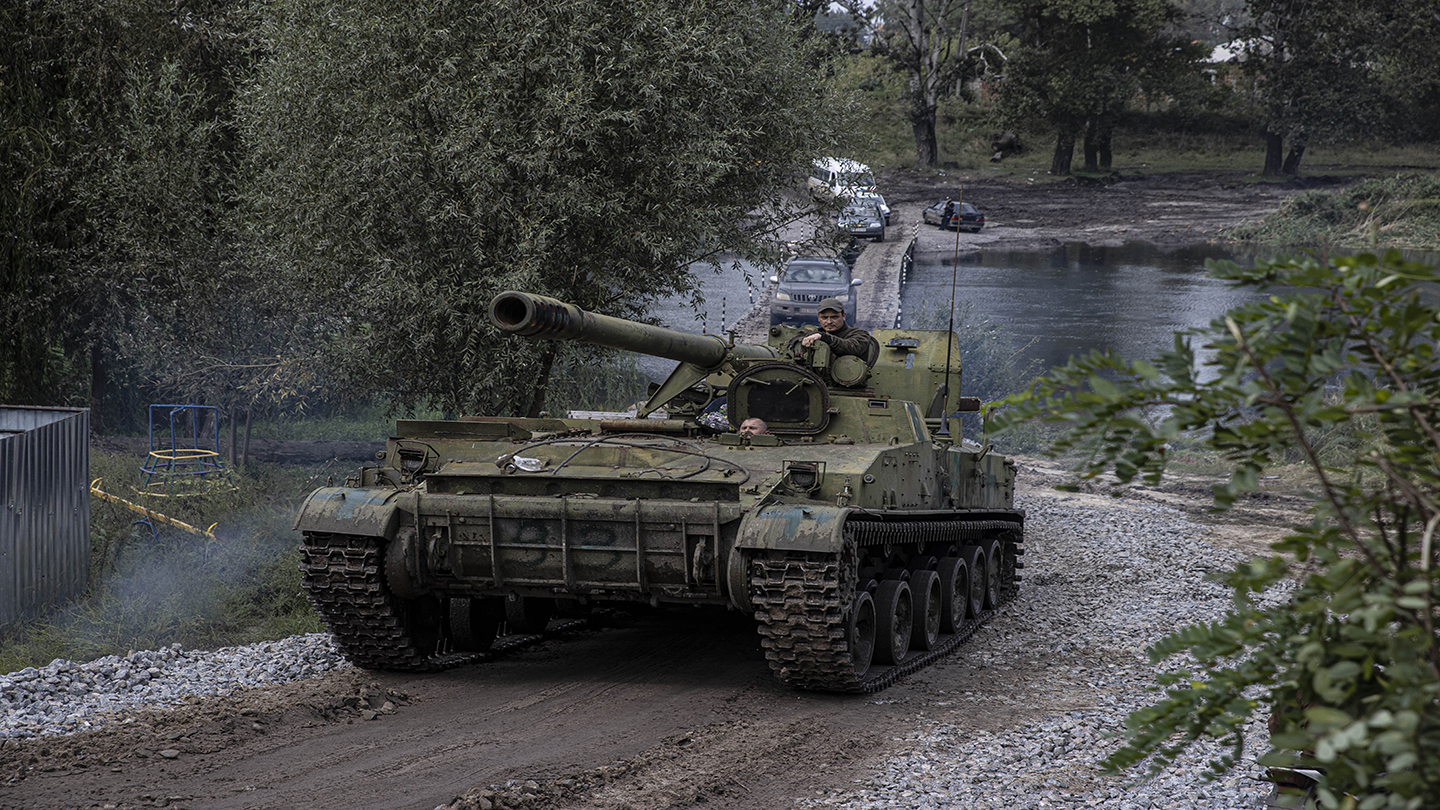The Ukrainian Army on Friday claimed another major victory in its Kharkiv counteroffensive, capturing the eastern section of the city of Kupiansk, a key railhead located about 40 miles northeast of Izyum, which had been previously liberated.
The western portion of the city had been captured days earlier, but Ukrainian troops said on Friday they liberated the eastern part, separated by the Oskil River which they crossed to launch the attack. It’s an important development since it sets up a bridgehead across that body of water.
As with the liberation of Izyum – where the U.N. is starting to investigate potential Russian war crimes (more on that below) – Ukrainian authorities say they are finding instances of Russian brutality there.
Ukraine’s SBU security service “is investigating the illegal detention of people in Kupyansk,” according to Suspilne, a Ukrainian media outlet. “According to the investigation, the occupiers set up a prison in the district police department. It held those who refused to cooperate with the occupiers. In cells designed for 140 detainees, the occupiers kept more than 400 people at the same time, according to the message of the Security Service of Ukraine.”
“The illegal prison of the Rashists was set up in the district police department of Kupyansk, where the “command center” of the occupation administration was located during the Russian invasion,” the SBU stated.
“According to the investigators, the prison held people who refused to cooperate with the Russian occupiers.”
And in its southern counteroffensive in the Kherson Oblast, Ukrainian forces struck the Court of Appeals building in the Russian-occupied city of Kherson during a meeting of occupation authorities, including administration and district heads, Russian media claimed.
When asked by The War Zone if he could verify Ukraine’s claims about the complete capture of Kupiansk, Air Force Brig. Gen. Pat Ryder, the Pentagon’s top spokesman, deferred specifics to Ukrainian authorities.
“We have seen them make some advances in the north, in the Kharkiv region,” Ryder told The War Zone during a media briefing Friday afternoon. “The Ukrainians continue to conduct their counter-offensive operations, primarily up in the north in Kharkiv and in the south in the Kherson region.”
The Pentagon assesses that “the Ukrainians are consolidating their gains after taking back significant territory, and that the Russians are attempting to shore up their defensive lines after having been pushed back in the south. The Ukrainians continue to make what we would assess is deliberate, calculated forward movement as the Russians continue to try to hold that line.”

When asked how long the war could last, Ryder declined to speculate.
“I’m not going to try to put a timeline on this conflict, other than to say again, we believe that this will continue to be a tough fight,” he said. “We’ve seen the Ukrainians have some success. And we’ll continue our focus on supporting them in their fight. But we do anticipate that this will continue to be a very tough fight. And the only thing that could shorten it would be if the Russians decided to do the right thing, and withdraw their occupying forces from Ukraine.”
In its latest assessment, the Institute for the Study of War (ISW) offered several key takeaways, including how Russia is struggling to balance raising additional forces to fight in Ukraine against the animosity of Russians who don’t want to see a general mobilization.
“Chechen leader Ramzan Kadyrov called on all federal subjects to initiate ‘self-mobilization’ and not wait on the Kremlin to declare martial law,” ISW reported. “Kadyrov claimed that each federal subject must prove its readiness to help Russia by recruiting at least 1,000 servicemen instead of delivering speeches and conducting fruitless public events. Russian propagandist Margarita Simonyan echoed the need for Russians to volunteer to join the war effort, and several loyalist Russian governors publicly supported Kadyrov’s speech. The Russian-appointed head of occupied Crimea, Sergey Aksyonov, announced the formation of two volunteer battalions on the peninsula in support of Kadyrov’s calls.”
Other key ISW takeaways include:
- Ukrainian forces continued counteroffensive operations in eastern Ukraine.
- The Kremlin has almost certainly drained a large proportion of the forces originally at Russian bases in former Soviet states since Russia’s full-scale invasion of Ukraine began in February, likely weakening Russian influence in those states.
- Russian and Ukrainian sources reported Ukrainian ground attacks northwest of Kherson City, near the Ukrainian bridgehead over the Inhulets River, and south of the Kherson-Dnipropetrovsk Oblast border.
- Russian-appointed occupation officials and ‘milbloggers’ claimed that Ukrainian forces conducted a landing at the Kinburn Spit (a narrow peninsula in Kherson Oblast).
- Russian forces conducted limited ground assaults and are reinforcing positions on the Eastern Axis.
- The Russian proxy Donetsk People’s Republic (DNR) is likely attempting to stop its administrators from fleeing ahead of the Ukrainian counteroffensive, demonstrating the bureaucratic fragility of the DNR.
Before we get to the latest, get caught up on The War Zone’s previous rolling coverage of the war in Ukraine by clicking here.
The Latest
The first tranche of National Advanced Surface to Air Missile Systems, or NASAMS will be delivered to Ukraine sometime in the next two months, Ryder told reporters Friday.
“We’re tracking that two NASAMS are expected to be delivered within the next two months or so,” Ryder said. “These defensive systems will further contribute to protecting Ukrainians from enemy air threats to include aircraft, unmanned aerial vehicles and missiles.”
The War Zone did a deep dive into the promise of NASAMS to Ukraine and what that could mean to its defenses. You can read about that here.
News about the NASAMS comes a day after the Pentagon announced the authorization of the latest Presidential Drawdown Authority of security assistance, this time valued at up to $600 million, “to meet Ukraine’s critical security and defense needs. This authorization is the Biden Administration’s 21st drawdown of equipment from DoD inventories for Ukraine since August 2021.”
Capabilities in this package include:
- Additional ammunition for High Mobility Artillery Rocket Systems (HIMARS);
- 36,000 105mm artillery rounds;
- 1,000 precision-guided 155mm artillery rounds;
- Four counter-artillery radars;
- Four trucks and eight trailers to transport heavy equipment;
- Counter-Unmanned Aerial Systems;
- Mine clearing equipment;
- Claymore anti-personnel munitions;
- Demolition munitions and equipment;
- Small arms and ammunition;
- Night vision devices, cold weather gear, and other field equipment.

In total, the United States has committed approximately $15.8 billion in security assistance to Ukraine since the beginning of the Biden Administration. Since 2014, the United States has committed approximately $17.9 billion in security assistance to Ukraine and more than $15.1 billion since the beginning of Russia’s invasion on Feb. 24.
Asked about what the cold weather gear was, and whether that was a sign that Ukraine is in store for a long, cold winter fight, Ryder said that the U.S. will ship parkas and gloves and “the kinds of things that you would use for conducting operations in cold weather. In terms of the future, we continue to work closely with our Ukrainian partners, and the international community, to look at what their needs are.”
As Ukrainian forces take back territory, they keep finding indications of atrocities committed by Russians during their occupation. In Geneva on Friday, the UN human rights office, OHCHR, said UN investigators already in Ukraine would be looking to see if those buried were soldiers or civilians, and whether they had died in hostilities or from natural causes.
“In the Kharkiv region, investigative actions are ongoing in the areas that were liberated from the Russian occupation,” Ukrainian President Volodymyr Zelensky said on his Telegram channel Friday. “All the crimes of the Rashists are recorded, evidence of their guilt is collected. Torture chambers were found in which civilians of the occupied cities and towns were abused, premises in which people were kept – even foreigners.”

“The world must react to all this,” Zelensky said. “Russia repeated in Izyum what it did in Bucha. And now we have just begun to learn the full truth about what happened in this part of Kharkiv region. It is good that the UN structures are already preparing a group of workers who will visit this place near Izyum, who will see and be able to report to everyone in the UN system about what the Russian terrorists did.”
“We will ensure full access for journalists to the liberated territory and all places of human abuse,” said Zelensky. “We will give the kind of access that will help tell the world that racism must be condemned.”
Images like the ones from Izyum, and so many others in this 205-day-old full-scale invasion are not helping Russian President Vladimir Putin’s on the world stage.
A day after Chinese leader Xi Jinping raised questions about the war, Indian Prime Minister Narendra Modi took things a step further, telling Putin that “now is not the time for war.”
Putin told Modi that “we want all of this to end as soon as possible,” but blamed Ukraine for being unwilling to negotiate.
While Putin is trying to explain his faltering war to world leaders, some of his top media mouthpieces are giving grudging respect to the leadership of Ukraine’s military.
As if Russia didn’t have enough bad news about the war, Ukraine has found a new way to make commercial-off-the-shelf (COTS) drones even deadlier. The Ukraine Weapons Tracker says Ukrainian forces have adapted PTAB-2.5M anti-armor submunitions to be used on COTS drones. An improved version of the PTAB 2.5 high-explosive anti-tank (HEAT) submunition, this is a particularly nasty weapon.
“Each submunition contains a shaped charge for attacking armor vehicles,” according to the Collective Awareness to UXO (unexploded ordnance) website, “but also provides a fragmentation effect.”
Throughout the course of its Kharkiv counteroffensive, Ukraine has captured a large number of prisoners.
Russians have surrendered in many ways. This Ukrainian soldier explains one of them.

Despite the horrors of this conflict, Ukrainians have managed to maintain a sense of humor, as exhibited by this crew of a Norway-provided M109A3GN self-propelled howitzer traveling down a road.
We will continue to update this story until we state otherwise.
Contact the author: howard@thewarzone.com
